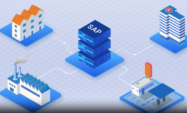SAP DevOps
Filter By
Browse By
- SAP Analytics and AI
- SAP Application Development and Integration
- All SAP Application Development and Integration
- SAP ABAP
- SAP ABAP Development Tools
- SAP ABAP Test Cockpit
- SAP API Management
- SAP BAPI
- SAP Basis
- SAP BRF
- SAP Business Application Studio
- SAP CMS
- SAP Design Studio
- SAP Development Tools
- SAP DevOps
- SAP EAI
- SAP EDI
- SAP Extension Suite
- SAP Fiori
- SAP Fiori Elements
- SAP Integration Suite
- SAP Low Code Application Development
- SAP Low Code Automation
- SAP Netweaver
- SAP Release Management
- SAP UI5
- SAP Web Application Server
- SAP Web IDE
- SAP Business Process Management
- SAP Center of Excellence
- SAP CIO
- SAP Customer Experience
- SAP Data and Data Management
- All SAP Data and Data Management
- SAP BW
- SAP BW/4HANA
- SAP Crystal Reporting
- SAP Data Archiving
- SAP Data Center
- SAP Data Governance
- SAP Data Integration
- SAP Data Migration
- SAP Data Quality
- SAP Data Services
- SAP Data Strategy
- SAP Data Visualization
- SAP Data Warehouse Cloud
- SAP DMS
- SAP Document Control
- SAP EIM
- SAP ETL
- SAP ETL Tools
- SAP HANA
- SAP HANA Administration
- SAP HANA Deployment Infrastructure
- SAP HANA Studio
- SAP Master Data
- SAP Master Data Governance
- SAP MDM
- SAP Enterprise Architect
- SAP Enterprise Asset Management
- SAP ERP
- SAP Finance
- All SAP Finance
- SAP Accounting
- SAP AR AP
- SAP Asset Accounting
- SAP Billing Systems
- SAP BPC
- SAP BRIM
- SAP Cash Management
- SAP Central Finance
- SAP Controlling
- SAP COPA
- SAP Cost Center Accounting
- SAP e-invoicing
- SAP FICO
- SAP Finance Automation
- SAP Financial Closing Cockpit
- SAP Financial Consolidation
- SAP Financial Planning
- SAP FX Risk
- SAP General Ledger
- SAP Global Tax Management
- SAP Hyperion
- SAP Order to Cash
- SAP Payment Processing
- SAP Profitability Analysis
- SAP Rebate Management
- SAP S/4HANA Finance
- SAP Universal Journal
- SAP Governance Risk and Compliance
- SAP Human Capital Management
- SAP Intelligent Technologies
- SAP Platform and Technology
- All SAP Platform and Technology
- SAP Business Technology Platform
- SAP Cloud Connector
- SAP Cloud Integration Platform
- SAP Cloud Migration
- SAP Cloud Platform
- SAP Cloud Providers
- SAP Cloud Strategy
- SAP Container Platform
- SAP Digital Asset Management
- SAP Digital Integration Hub
- SAP Digital Signature
- SAP HANA Enterprise Cloud
- SAP HEC
- SAP Hyperscalers
- SAP Infrastructure
- SAP Messaging
- SAP Smart Forms
- SAP Quality and Testing
- SAP Security
- SAP Spend Management
- SAP Supply Chain Management
- All SAP Supply Chain Management
- SAP APO
- SAP Asset Management
- SAP Business Network
- SAP Digital Manufacturing Cloud
- SAP Digital Twin
- SAP EWM
- SAP IBP
- SAP Inventory Management
- SAP Label Printing
- SAP Logistics
- SAP Manufacturing
- SAP Manufacturing Automation
- SAP MES
- SAP MII
- SAP MM
- SAP MRO
- SAP MRP
- SAP Order Management
- SAP Plant Maintenance
- SAP PLM
- SAP Production Planning
- SAP S&OP
- SAP SD
- SAP SPM
- SAP Supply Chain Planning
- SAP Track and Trace
- SAP Transportation Management
- SAP System Administration
What is SAP DevOps?
Today’s technology space is defined by rapid application rollouts, upgrades, and updates to meet growing business demand to be agile, innovative, and competitive. The landscape is also characterized by an interconnected network of SAP and non-SAP software that needs to function in tandem. Agile and DevOps approaches can transform software change management in a big way with software development teams delivering change faster and more frequently, along with automation enabling testing and deployment to keep pace with rapid development.
DevOps for SAP builds upon the principles of agile development by emphasizing collaboration, openness, and automation for delivering new features and services with speed and flexibility. Limited accountability, visibility, and satisfaction are the results of traditional IT development and delivery methods that often involve separate departments working independently. However, in DevOps for SAP, eliminating departmental barriers and creating a versatile team that consistently communicates with each other is the focus. This results in collaboration between Development, QA, Operations, and the business side, and fosters effective communication, a sense of ownership, and trust. The ultimate objective is to establish a smooth and uninterrupted workflow for integrating, delivering, deploying, and enhancing services.
SAPinsider’s report on Change Management and Testing in SAP found that while the traditional waterfall model dominates for SAP ERP Central Component (SAP ECC) or SAP Business Suite (37% vs. 28%), Agile and DevOps are starting to make inroads within SAP teams (43% plan to roll them out and 38% plan to roll out DevOps orchestration tools).
SAP teams, used to multi-year development projects followed by years of maintenance, must now adapt to this rapid, multi-modal development world. Many SAP teams struggle, leading to subpar application quality, suboptimal business value, security and compliance issues, business disruption, project delays, and budget overruns.
SAP teams need a suitable SAP-specific solution, with the capability to connect SAP to external continuous integration/continuous delivery (CI/CD) tools for non-SAP software. Several DevOps tools are available to accelerate workflows and enable CI/CD from ServiceNow, Microsoft Azure DevOps, and Rev-Trac; there is also open-source software such Jira, Jenkins, and GitLab.
These tools include change requirements management, source code, version control, and configuration management, among other things. Several of these tools can work across SAP and non-SAP and offer several features to enable DevOps.
- Service Management: ServiceNow enables SAP change tickets to be stored and managed with the tickets for other systems. It’s possible to create an integration between ServiceNow and the SAP development environment using an SAP DevOps solution. DevOps for SAP orchestrates and synchronizes approvals across multiple development tracks while updating status in ServiceNow as change progresses through the pipeline.
- Agile Backlog Management: An agile tool like Jira can enable the management of user stories as the business requirements change, with the SAP DevOps platform ensuring SAP development stays in sync with the current priorities in Jira, supporting reporting on status, Kanban boards, and traditional agile retrospective reporting such as burn down charts.
- Automated Testing: By integrating SAP development through a DevOps automation platform, it’s possible to keep SAP testing aligned with non-SAP testing. Testing automation tools from vendors such as Panaya ensure that testing results are verified across pipelines, preventing the deployment of change until everything passes testing requirements.
- Pipeline Integration: Many parts of the development cycle – approving code, release to quality assurance, and ultimately deployment to preproduction and production – are part of the integrated pipeline. With DevOps tools, there is full visibility of all software development through standard tools and greater efficiency resulting from standardized processes.
Why Adopt DevOps for SAP?
With customer expectations continuously rising as digital transformations pick up pace, businesses need to be agile and flexible enough to adapt to these changes or risk losing relevance. This is particularly true for traditional software Application Lifecycle Management (ALM) methods that are manual and lack transparency. DevOps allows us to update and enhance SAP systems and effectively respond to growing business demands. DevOps for SAP enables organizations to deliver new products, features, and services to their customers while minimizing risks. DevOps practices in the SAP development lifecycle can enable significant enhancements in software delivery holistically. Organizations can streamline process implementation for innovation and technical rehabilitation with reduced effort and minimized risk. With process automation in a DevOps framework, the need for manual intervention is eliminated and risk is reduced. Organizations can use automation to redirect valuable development resources towards addressing business challenges and innovation, and to seamlessly integrate SAP development into broader software delivery pipelines.
DevOps empowers IT to swiftly adapt to evolving market conditions and meet customer expectations. This ensures that IT remains highly responsive and delivers solutions that truly address the demands of the market and end users. With DevOps, organizations can free themselves from traditional SAP release cycles and transition to a Continuous Integration/Continuous Delivery (CI/CD) approach as deploying changes becomes easy and SAP systems gain enhanced agility and responsiveness.
Join SAPinsider to access opportunities for networking and engagement in the dynamic SAP ecosystem. As a member, you will have access to a wealth of valuable resources and content tailored to SAP technologies and best practices like the latest research reports, articles, webinars, and events that will keep you informed and ahead of the curve.SAPinsider membership grants you exclusive access to in-depth analyses, expert insights, and practical guidance that will empower you to navigate the ever-evolving SAP landscape with ease. SAPinsider membership will enable you to remain one step ahead and harness the latest trends, innovations, and strategies to drive your own powerful digital transformations, optimize your SAP investments, and unlock business success.
534 results
-

Manual Provisioning of Non-SAP Roles Using SAP Access Control
Published: 22/May/2014
Reading time: 13 mins
SAP Professional Journal Learn how to minimize multiple access requests by configuring SAP Access Control so that you can manually provision access for non-SAP applications. Key Concept Transaction code SPRO is used for setting up SAP Access Control configuration settings. You execute SPRO to integrate non-SAP Remote Function Call (RFC) connections with the logical file...…
-

The Power of Prototyping with SAP Fiori
Published: 21/December/2024
Reading time: 3 mins
SAP Fiori is a design language that enhances user experiences in enterprise applications through prototyping, which fosters user-centric design, cost and time efficiency, improved collaboration, iterative refinement, and promotes user adoption by allowing the creation of interactive, high-fidelity prototypes that closely align with both user needs and business goals.
-

Speed Up Security Testing Using eCATT
Published: 15/January/2006
Reading time: 18 mins
The Extended Computer Aided Test Tool (eCATT), successor of SAP’s CATT, can test a wide range of SAP applications running in the SAPGUI for Windows or Java environments. It can also access data in the database (including customizing data) and ABAP coding on the application server. See how to use eCATT to speed up testing...…
-
-

Best Practices for mySAP CRM-to-CTI Integration Testing
Published: 15/October/2005
Reading time: 11 mins
Desktop load testing is not the same as testing the integration between mySAP Interaction Center (IC) and the computer-telephony interface (CTI). Learn why and what constitutes an effective mySAP IC-CTI approach. Key Concept The computer-telephony interface (CTI) allows computer systems to act as a call center by linking them to the telephone system. It ensures that calls...…
-

Cox Automotive Australia moves from SAP R/3 to SAP S/4HANA through RISE with SAP
Published: 22/August/2024
Reading time: 3 mins
Automotive services and technology company Cox Automotive has adopted RISE with SAP to upgrade its Australian business’s legacy SAP R/3 system directly to SAP S/4HANA. Headquartered in the US, Cox Automotive provides vehicle remarketing services and digital marketing and software for automotive dealers and consumers. Tony Grooby, Chief Information Officer of Cox Automotive Australia, shared…
-

Quickly Resolve SAP Interactive Form Issues for Seamless Printing Workflow
Published: 21/May/2010
Reading time: 16 mins
The SAP Interactive Forms software by Adobe (SAP Interactive Forms) offers an enhanced look and interaction capabilities. However, using SAP Interactive Forms can cause obstacles within the printing workflow. Understanding the issues that may arise helps you set up your printing environment for SAP Interactive Forms. Key Concept The SAP Interactive Forms software by Adobe...…
-

Westernacher Consulting Shines in Sustainability and Supply Chain Transformation
Published: 04/December/2024
Reading time: 4 mins
Westernacher Consulting, founded three years before SAP, is a long-term partner known for its expertise in supply chain solutions, strategic implementations with SAP technologies, and a commitment to sustainability, establishing a strong presence in the APAC region and offering tailored workshops to enhance clients’ supply chain performance.
-
-

APJ and ANZ are booming for SAP – and clients can boom with the right partner
Published: 11/November/2024
Reading time: 2 mins
SAP’s Q3 2024 results highlight Asia Pacific and Japan as its fastest-growing cloud revenue region, with FPT Software, a key partner, achieving significant client success by streamlining SAP ECC system processes, yielding a 300% faster tax submission and improved data management.
-

Test Data Automation – A Key Lever for Rapid Application Strategy
Published: 06/April/2022
Reading time: 4 mins
Creating production-quality test data with referential integrity is critical for high quality testing, especially with cloud and hybrid applications. But compliance requirements make it challenging, especially when testing is done by external consultants. Automation tools simplify the process. Mastering SAP Premium Access Membership Required You must be a Mastering SAP Premium Access member to access…
-

Build Industry Solutions with SAP S/4HANA and IBM Watson deployed on IBM Cloud
Published: 01/October/2017
Reading time: 22 mins
Manufacturing company Mondi is using SAP S/4HANA, IBM Cloud and Watson APIs to automate month end processing. An Asian transportation company transformed to ward off stiff competition from Uber and Grab by combining IBM Weather data with Cognitive Fleet management. How can you create new solutions for your industry with SAP and Watson Solutions? What…
Become a Member
Unlimited access to thousands of resources for SAP-specific expertise that can only be found here.
Upcoming Events
Related Vendors
Your request has been successfully sent


